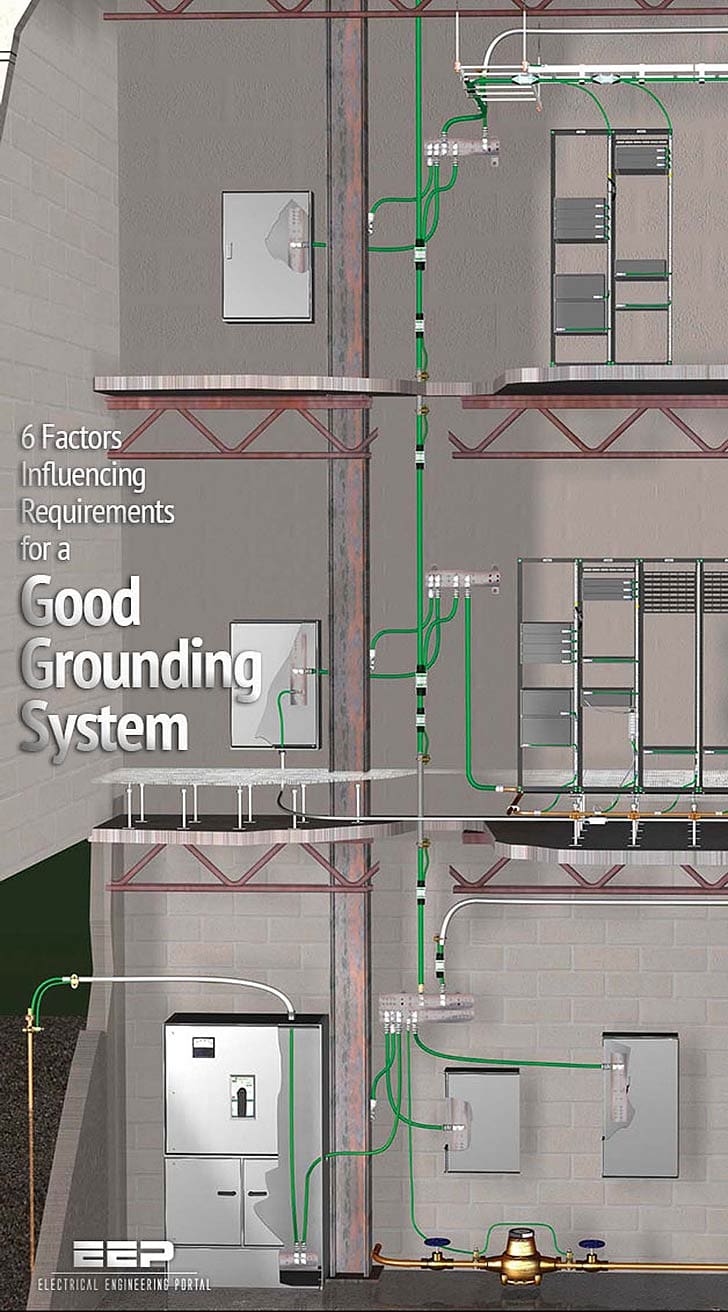
Six Requirements To Consider
In an industrial plant or other facility that requires a grounding system, one or more of the following must be carefully considered (refer to Figure 1 below):

1. Limiting Voltage
Limiting to definite values the voltage to earth of the entire electrical system. Use of a suitable grounding system can do this by maintaining some point in the circuit at earth potential.
- Limits voltage to which the system-to-ground insulation is subjected, thereby more definitely fixing the insulation rating.
- Limits the system-to-ground or system-to-frame voltage to values safe for personnel.
- Provides a relatively stable system with a minimum of transient overvoltages.
- Permits any system fault to ground to be quickly isolated.
2. Grounding of Metallic Parts
Proper grounding of metallic enclosures and support structures that are part of the electrical system and may be contacted by personnel. Also to be included are portable electrically operated devices.

Consider that only a small amount of electric current – as little as 0.1 A for one second – can be fatal! An even smaller amount can cause you to lose muscular control. These low currents can occur in your body at voltages as low as 100 V, if your skin is moist.
3. Static Electricity
Protection against static electricity from friction. Along with this are the attendant hazards of shock, fire and explosion.
4. Direct Lightning Strokes

Protection against direct lightning strokes. Elevated structures, such as stacks, the building proper, and water tanks may require lightning rods connected into the grounding system.
5. Induced Lightning Voltages

Protection against induced lightning voltages. This is particularly a factor if aerial power distribution and communications circuits are involved.
6. Low-resistance Ground Connections
Providing good grounds for electric process control and communication circuits.
With the increased use of industrial control instruments, computers, and communications equipment, accessibility of low-resistance ground connections in many plant locations – in office and production areas – must be considered.
Reference: Getting down to Earth – A practical guide to earth resistance testing – MEGGER











Corporate Planning Department
3rd Floor Annex Building
CENECO Main Office
Cor. Gonzaga-Mabini Streets
Bacolod City, Negros Occidental
Philippines
Very good
Very good I loved this
Love this site as it is very use full for electrical engineer